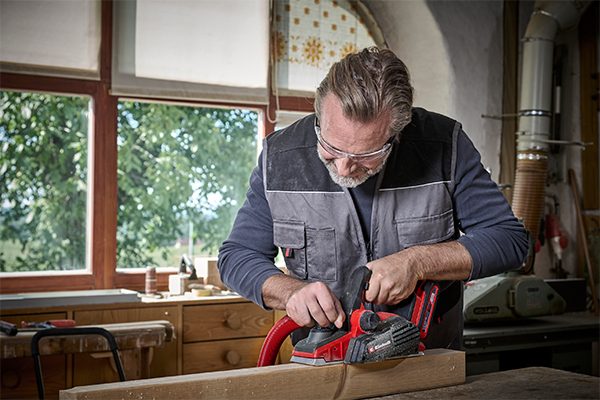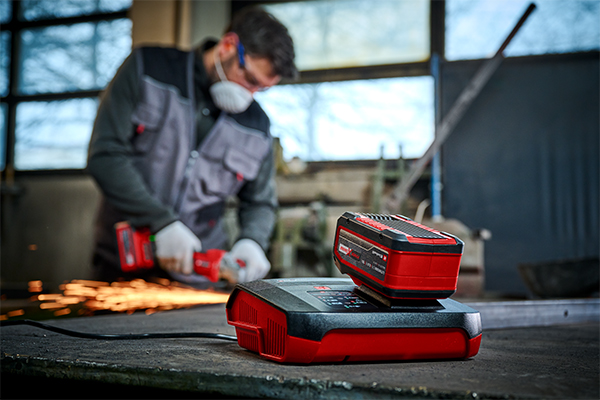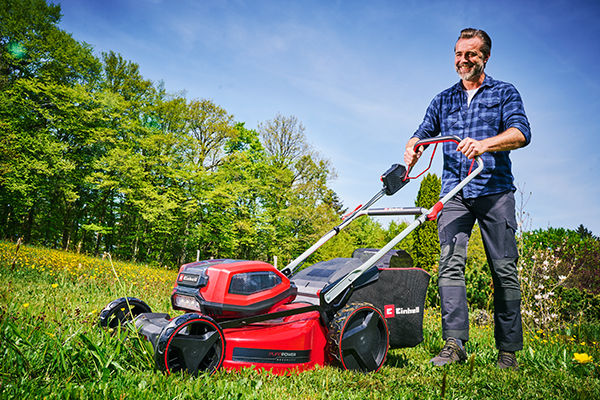The mitre saws in practical test: features and models compared
Mitre saws are considered true all-rounders among saws. But why? Simply put, no other saw is more versatile than the mitre saw. Whether you're sawing for unique furniture pieces, robust garden fences, beautiful wooden wall cladding, laying floorboards, or beautifying the gable, the mitre saw is your perfect helper for all kinds of renovation work or cutting wood pieces. Moreover, the saw's cuts are always clean and precise.
Do you think this all sounds too good to be true? We tested the mitre saw in the Einhell mitre saw test for angles and saw blades and explain how the saw works, where you can use it, and the features that make it an all-rounder.
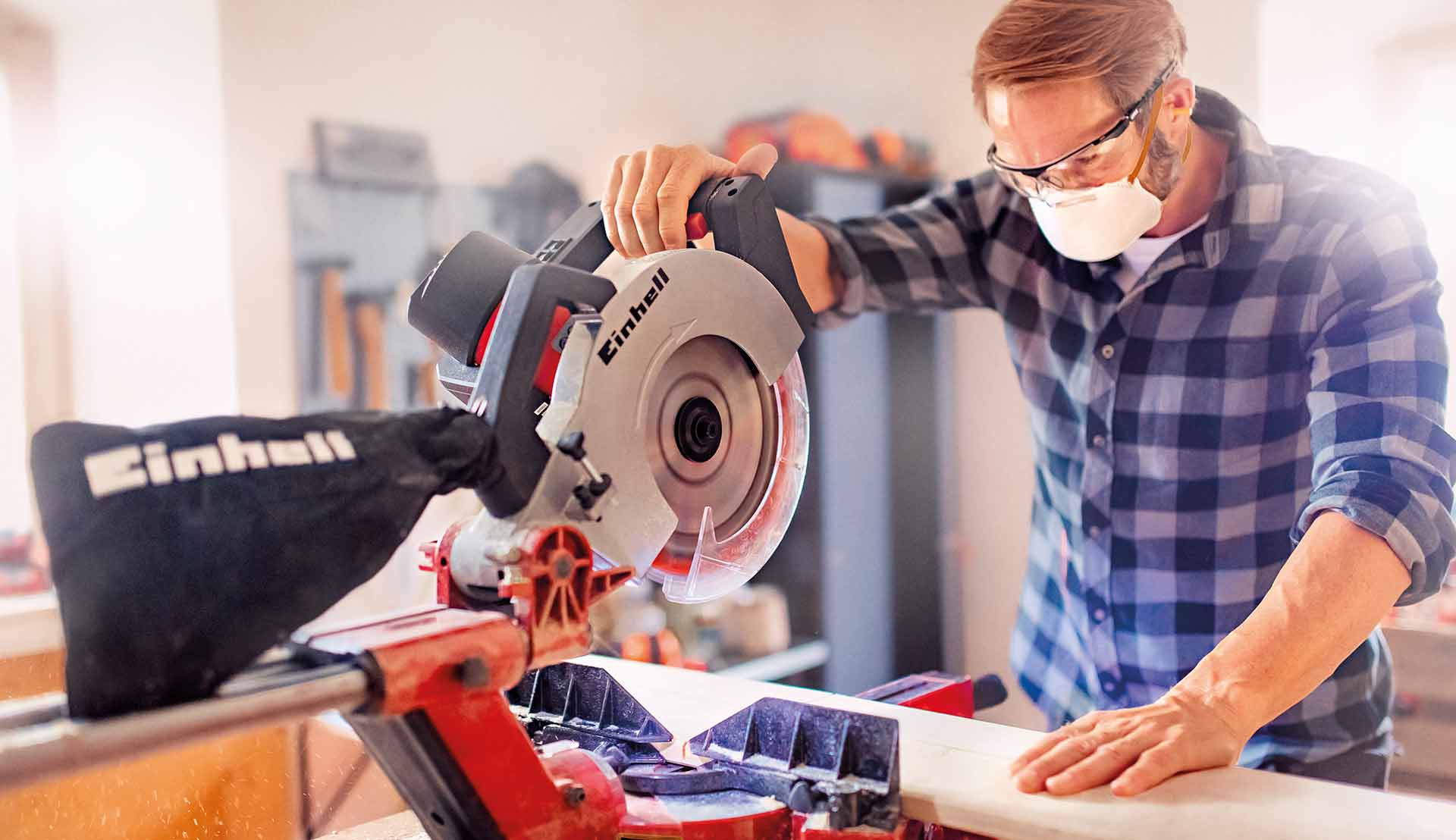
How does the mitre saw work?
To understand how a mitre saw works, you need to know that there are different types of this saw. For example, in industry, mostly under-table mitre saws are used, while for hobbyists, over-table mitre saws with a saw blade that can be lowered from above are better suited.
In general, the pure mitre function offers craftsmen little application possibilities, which is why it is usually combined with the bevel function. The right all-rounders often shine with an additional pull function for processing very wide workpieces. But more on that later. So, how does a mitre saw actually work?
The Einhell mitre saws have an integrated tilt angle and a saw head that can be tilted 45° to the left, allowing you to make precise, clean miter and bevel cuts as well as diagonal cuts. With some models, the saw head can even be tilted to the right as well. The integrated laser helps you work particularly safely and accurately with the saw. Einhell models are also characterized by a particularly powerful and reliable motor and offer you, depending on the model, a cut, mitre, and pull function.
Cut function
With the cut function, you shorten the workpieces with the saw blade by guiding it vertically from above onto the workpiece. This makes it possible to cut pieces that are always the same size.
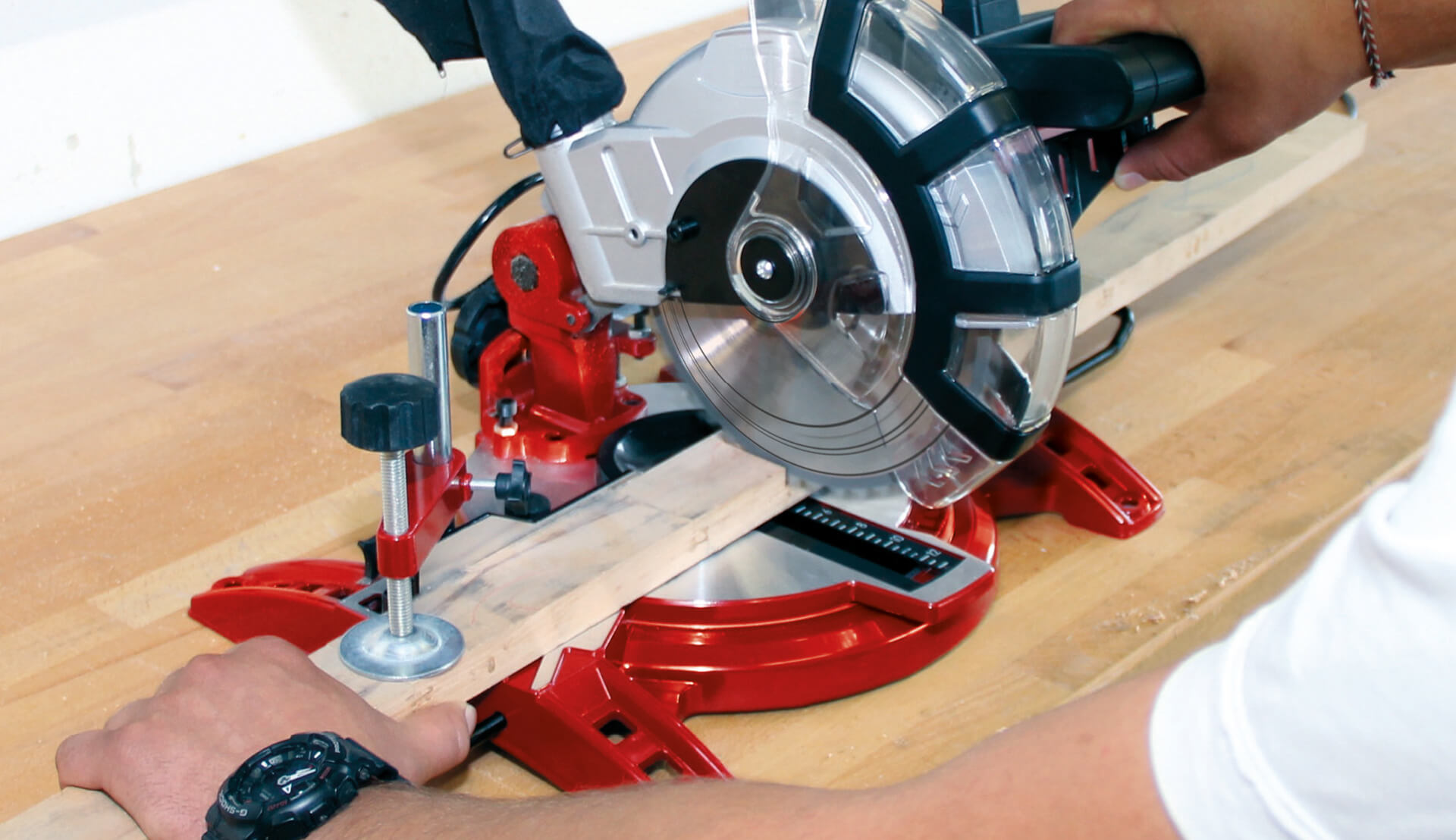
Mitre function
Your next construction project is coming up and you need angled and precise cuts? With the mitre function, the saw blade of the saw is tiltable, making it possible to make angled and diagonal cuts in the cutting plane - perfect for corner joints! Whether you're working with moldings, beams, cornices, picture frames, corners, or drawers, the mitre function always allows for precise execution. With Einhell saws, you can make angle and mitre cuts with a two-sided directional tilt from -45° to +45° degrees. So, you can go around any corner!
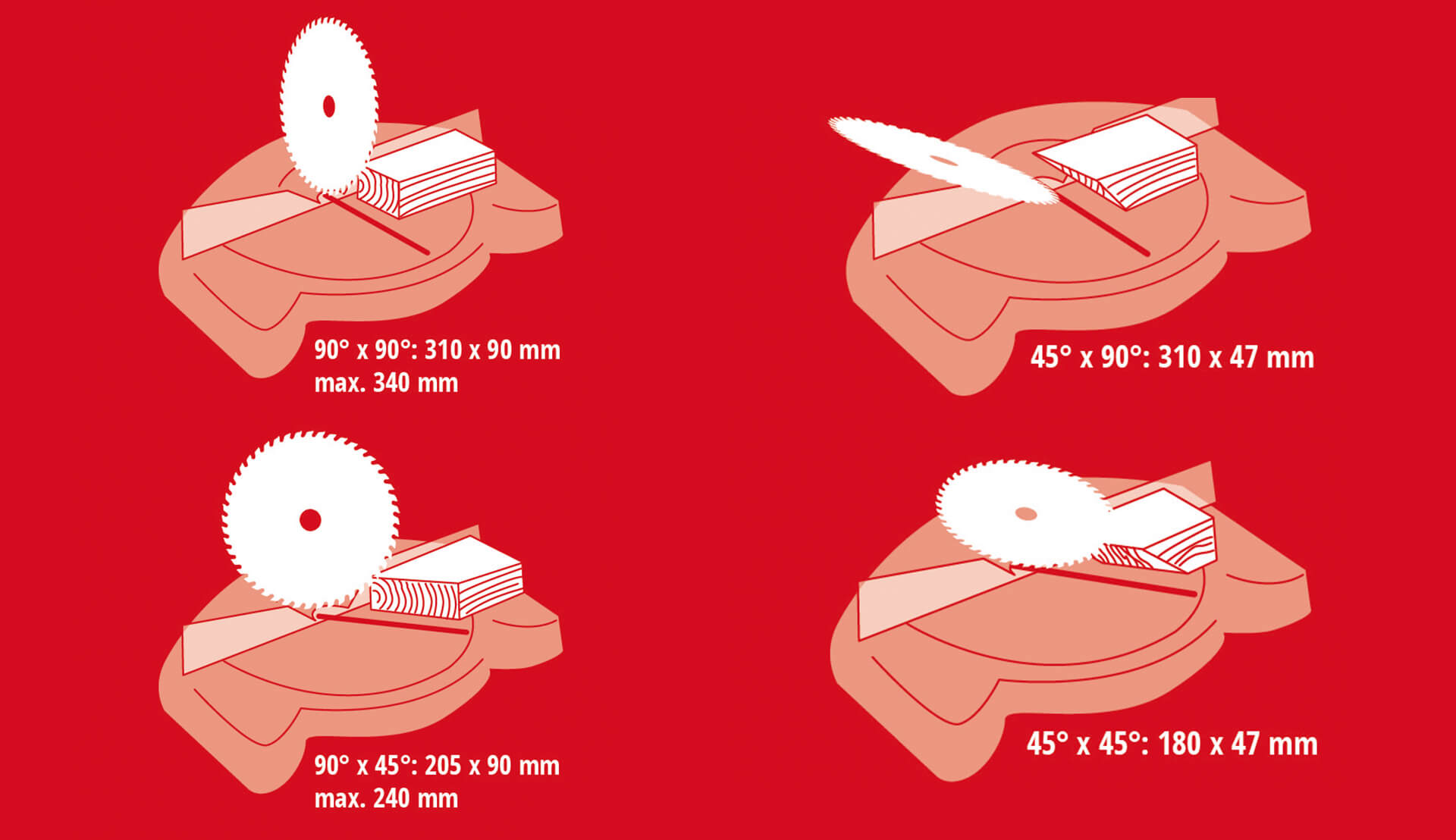
Sliding function
The additional sliding function on selected models allows you to saw wider workpieces, while the cutting length with the miter and bevel function is limited to the diameter of the saw blade.
So, how does it work exactly? With the sliding function, you move the saw blade horizontally back and forth along a rail. This significantly increases your cutting range, and thanks to the rail, the cuts remain straight and precise. This function is particularly useful for cutting materials such as laminate, parquet, or wooden beams. Learn how to use the saw correctly and set it up precisely for angle and bevel cuts here.
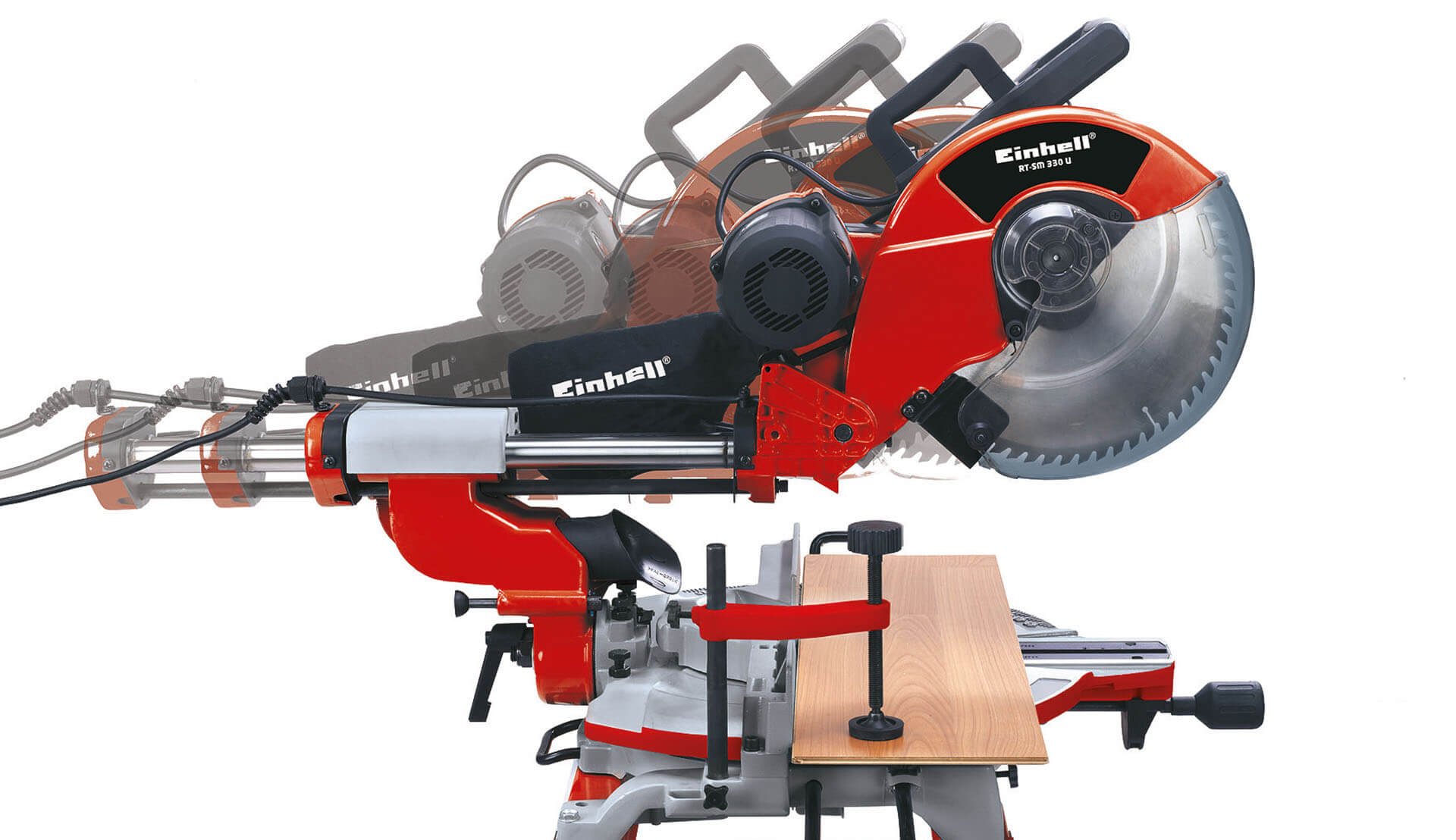
The advantages of the different models in comparison
Each craft is unique. That's why you'll find different types of mitre saws depending on your use and application. Einhell, for example, offers simple mitre saws, mitre saws with cut functions, sliding mitre saws, and mitre saws with upper table. The saws are also available either cordless or with a power cord. With such a wide selection, even professionals need to consider what they need before making a choice. To help you choose the right saw for your needs, we explain which saw is best for which task.
Do you need a saw for simple cutting and precise angle and compound cuts? Then the mitre saw is the right tool for you. The sliding mitre saw, on the other hand, has all the features of a mitre saw and also includes a sliding function. This type of saw, also known as a sliding mitre saw, is particularly useful for working with wider materials, as mentioned earlier.
Finally, there's the mitre saw with upper table. This saw offers the functions of both a mitre saw and a table saw. Simply adjust the saw table and you're ready to go. Pretty convenient, right?
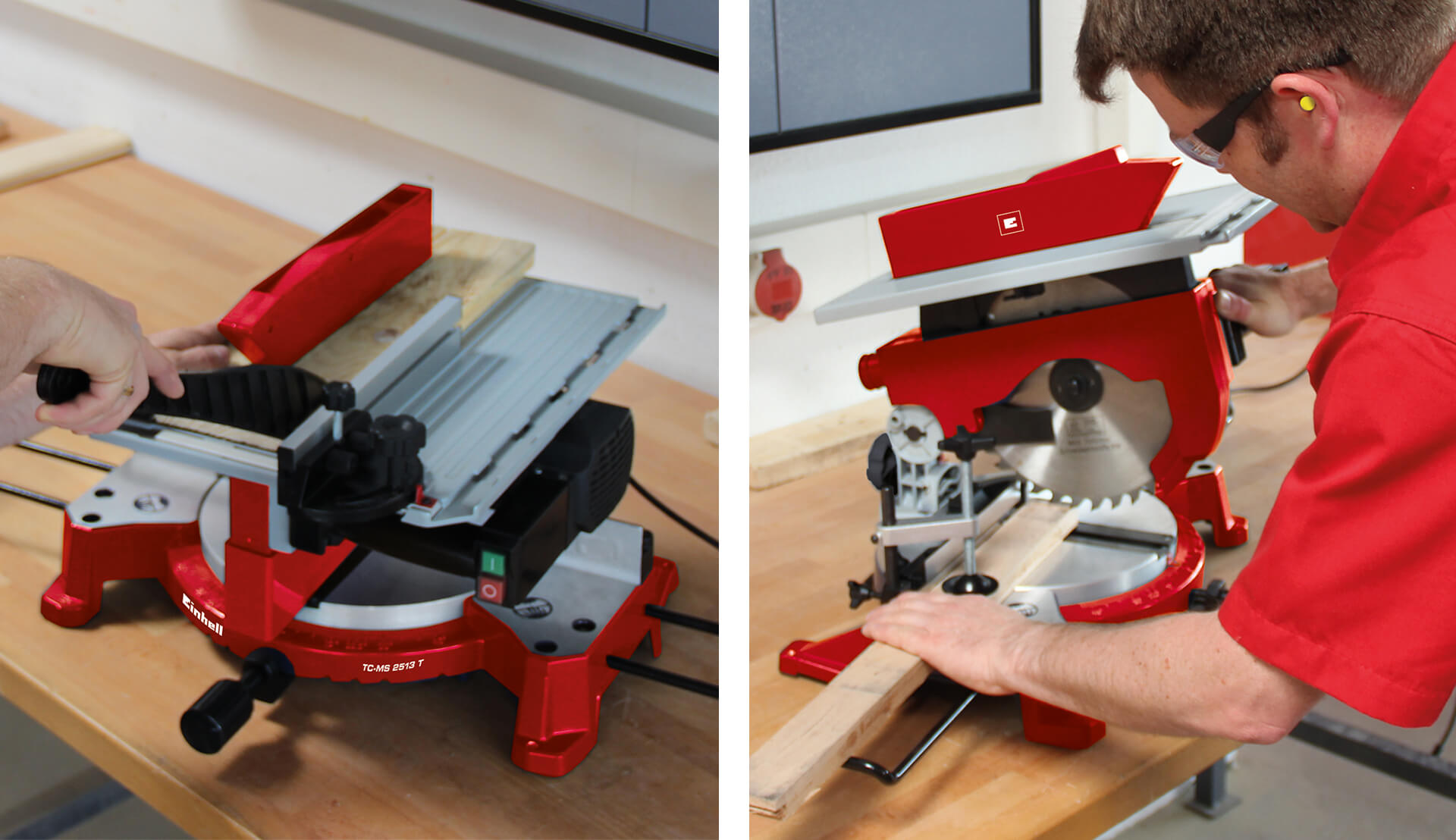
Once you have found your model, the question arises as to whether a battery-powered or a mains-powered device is better suited for you and your plans. With a mains-powered saw, there is a clear advantage: you can saw continuously. Connected to the power source, the saw continuously provides you with maximum power thanks to its powerful motor. However, a small downside is the dependency on the power outlet. In addition, the power cable can be cumbersome for certain jobs. So, if you want to be flexible and mobile, then the battery-powered option is the right choice for you.
But what if the battery runs out after a while? We have a simple solution for you. Simply insert a spare battery from the intelligent Power X-Change battery system and you can continue working.
What saw blade is best suited?
Clean and precise cuts are not only important in the professional field but also for hobbyists who want to produce accurate results with their workpieces. The foundation for this is the right saw blade. But which saw blades are best suited for your mitre saw? And what features should you consider when making your choice? We explain the most important characteristics, as saw blades are about more than just the blade diameter.
Carbide saw blade
Do you want clean and tear-free cuts on your workpieces? Then, for the mitre saw, it is best to use a high-quality carbide saw blade. Circular saw blades made of carbide have very high resistance and resilience to pressure. This is because the blade body and teeth are made from different materials. Your saw blade is thus particularly robust, durable, and resistant.
Saw blades with negative alternating teeth
Do you mainly work with wood? For woodworking projects, saw blades with negative alternate teeth are particularly suitable. This negative cutting angle prevents the blade from self-feeding. This gives you significantly more safety and control during the sawing process. In general, saw blades with negative alternate teeth are particularly well suited for cross-cuts in soft and hardwoods as well as for veneered and coated panel materials, profiles, moldings, and picture frames.
Thin-kerf saw blades
Precise, thin cuts and minimal material loss. You can only achieve that with thin-kerf saw blades. The minimal cutting surface makes it easier to control the blade's movement, allowing you to make pinpoint thin cuts.
Number of saw blade teeth and saw blade diameter
The saw blade diameter and the number of teeth of the saw blade also play a very important role. In general, a distinction is made in the mitre saw between the universal saw blade and the fine-toothed saw blade. The universal saw blade is already included with the Einhell mitre saw and is suitable for a variety of wood materials, with minimal tear-out.
With a fine-toothed saw blade, you can achieve perfect tear-out-free cuts against the wood grain. The fine-toothed saw blade is particularly useful for coated and veneered workpieces. Thanks to the spindle lock, changing your saw blade is very easy.
Accessories for the mitre saw
Can working with your mitre saw become even better and more enjoyable? Yes, with the right accessories! To ensure that you can work safely and neatly with your mitre saw, the accessories are already included in the delivery of Einhell saws. As mentioned before, the saw blade plays a significant role in the cutting result. However, after several uses, wear and tear can be observed on the blade, which reduces the accuracy of the cuts. Many models only come with one saw blade in the package. Therefore, it is advisable to order one or two additional saw blades. However, note that the diameter is given in millimeters and must match the bore of the workpiece.
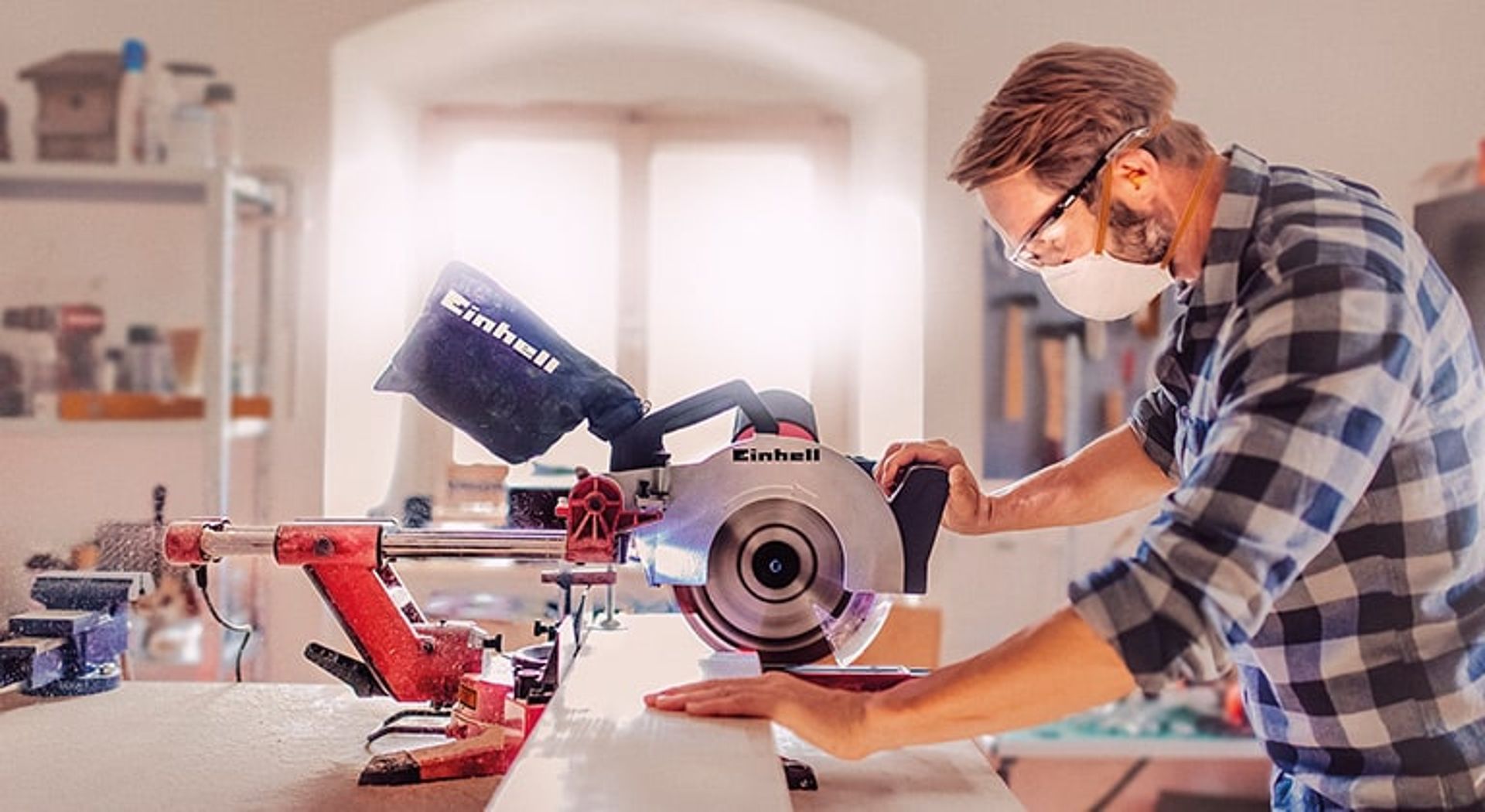
When working with your mitre saw, many sawdust particles are scattered in the air. These make it difficult to see your workpiece and pose a risk of eye injuries, which is why you should always wear protective goggles while using the saw. In addition, Einhell's mitre saws are equipped with a dust collection container that captures the sawdust. This prevents the chips from spreading throughout your workspace and allows for a clear view of your workpiece.
It is also important to always wear appropriate protective gear, such as eye and ear protection, while working with the mitre saw. You can find out which protective gear you should wear and what you should generally keep in mind when working with the mitre saw here.
Comparison of Mitre Saw and Table Saw
Mitre saw, sliding mitre saw, and mitre compound saw - you've probably heard many terms by now. The mitre saw test is as diverse as the saw itself. But what makes the mitre saw with sliding and cutting function so special compared to the stationary table saw? To illustrate the difference from the stationary table saw, we will compare the two saws.
Table saw
The table saw is definitely one of the classics in the DIY garage. The saw scores mainly due to its high efficiency and flexibility. With the saw, you can work on the workpiece to be processed particularly safely. In addition, the saw allows you to work efficiently with easy handling and convinces with its stability and load capacity.
A table saw is particularly suitable for quick and easy sawing work. However, as soon as you want to cut angled cuts and miters, the table saw can no longer help you. In addition, you are bound to your workshop with the stationary device and cannot transport and use it mobile.
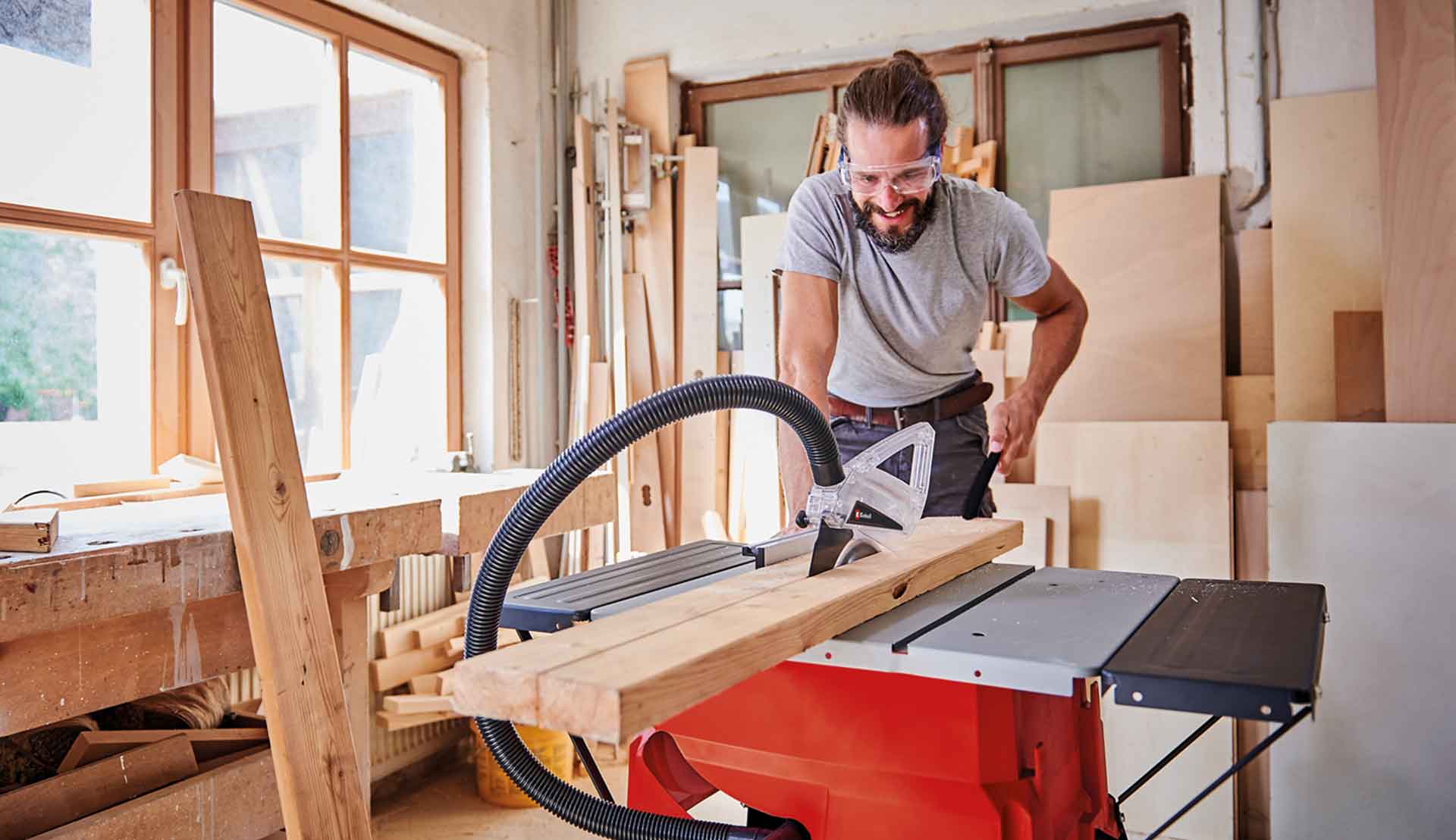
The sliding mitre saw
Cutting angles, miters, and simple cuts on large boards, narrow strips, or battens - the sliding mitre saw is a real all-purpose tool. With this saw, you can quickly and easily cut connecting pieces, pipes, and cable ducts. You can perform simple cutting tasks and have a variety of options for adjusting the cutting angle. And that's not all!
The sliding mitre saw is characterized by its high precision, cutting capacity, and cutting quality. Even delicate work such as clean mitres on bulky workpieces is no problem with the mitre saw. Moreover, the device offers you safety and stability in all your DIY projects. A true all-rounder.
You can't decide or don't want to do without either of the two models? Then the mitre saw with upper table is the right choice for you. Although the saw does not have a sliding function, it can be used as both a table saw and a mitre saw.
Conclusion: With individual features of our mitre saws, you become a real enabler!
So, which one is the best mitre saw? The conclusion of our comparison is that the different models are suitable for various projects. Therefore, there is not simply one best mitre saw from Einhell. Depending on the function and application, the devices are suitable differently for your respective DIY project. Therefore, before purchasing a saw, you should consider what you want to use the device for. In principle, all models are optimally suited for home woodworking and are among the best mitre saws in the DIY segment.

